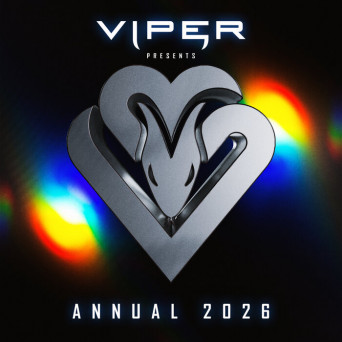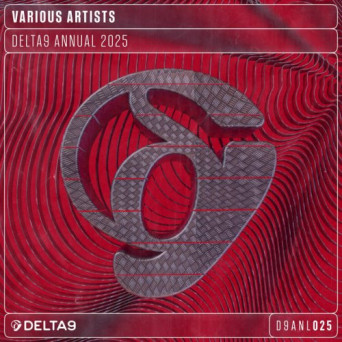Matmos – The Marriage Of True Minds
Label: Thrill Jockey
Catalog#: Thrill 316
Release date: 19-02-2013
Source: WEB
Format: MP3
Quality: 320 kbps
Size: 115 mb
Genre: Electronic
Style: Experimental / Vocal / IDM
Tracklist:
1. You (7:02)
2. Very Large Green Triangles (4:43)
3. Mental Radio (3:39)
4. Ross Transcript (2:37)
5. Teen Paranormal Romance (4:47)
6. Tunnel (5:40)
7. In Search Of A Lost Faculty (6:11)
8. Aetheric Vehicle (7:14)
9. E.S.P. (8:03)
10. Ganzfield (∞)
*Excerpts from the album. Now available from Experimedia.net.* *CD version in deluxe digipack with 24 page booklet.* As always, the first Matmos album in five years doesn’t begin with the music itself. It starts with an specific approach, a conceptual framework, and a bold endeavor. Each of the nine tracks that comprise “The Marriage of True Minds” began with Matmos attempting to communicate the methods of their new album to test subjects who were deprived of both sight and sound. It’s a take on the Ganzfeld experiment, of which the Baltimore duo’s last EP was named after. The inspirations proved to be wildly singular: some came in the form of a hummed vocal fragment that was looped and warped, others in a visual depiction that intimated a musical structure to follow.In translating these sources to song, “Marriage” is often playful and exuberant, exaggerating a voice snippet into an electronic symphony (“Very Large Green Triangles”) or matching what sounds like a Latin marching band with sirens and fire engines (“Mental Radio”). So much sonic material is placed into the album that highlights abound, but “Tunnel” may be Matmos’ crowning achievement on this double LP. The track, which features fellow Baltimore mainstay Dan Deacon, begins with stray scratches of raw guitar that is soon matched by a booming techno beat worthy of a night club dancefloor. “Tunnel” expertly accelerates and slows the swarm of hyperactive sound with a unique swagger until it closes unexpectedly in a fit of coughing.
Yet, for a pop album as varied as “Marriage,” the album is entirely listenable. The styles – ranging from the skittering pulse of tap dancing to the blackened churn of doom metal – are of course eccentric, but they are layered into tight, discernible shapes that are both meticulous and adventurous in a way that electronic pop rarely is. – Ryan Potts, Experimedia
Expanding upon the ambitious premise of their recently released The Ganzfeld EP, Baltimore-based electronic duo Matmos (Drew Daniel and M.C. Schmidt) are now releasing their first new full-length album in five years : The Marriage of True Minds.
Matmos are known for making toe-tapping rhythmic pop out of odd and unusual sound sources. They have always worn genre loosely, but it’s safe to say that this is the first electronic album to start with tap dancing and end with doom metal, and the only album on which members of Nautical Almanac and the Arditti String Quartet rub shoulders. Comprising stomping techno, eerie synth jams, musique concrete, Latin rhythms, and Ethiopian music, at once at home in the academy, the art gallery, the nightclub and the noise warehouse, the dizzyingly diverse assemblage which is “The Marriage of True Minds” is driven by a tightly unified conceptual agenda: telepathy.
For the past four years the band have been conducting parapsychological experiments based upon the classic Ganzfeld (“total field”) experiment, but with a twist: instead of sending and receiving simple graphic patterns, test subjects were put into a state of sensory deprivation by covering their eyes and listening to white noise on headphones, and then Matmos member Drew Daniel attempted to transmit “the concept of the new Matmos record” directly into their minds. During videotaped psychic experiments conducted at home in Baltimore and at Oxford University, test subjects were asked to describe out loud anything they saw or heard within their minds as Drew attempted transmission. The resulting transcripts became poetic and conceptual scores used by Matmos to generate the nine songs on this album. If a subject hummed something, that became a melody; passing visual images suggested arrangement ideas, instruments, or raw materials for a collage; if a subject described an action, then the band members had to act out that out and make music out of the noises generated in the process of the re-enactment. “The Marriage of True Minds” boasts a promiscuous cast of guest musicians, an array of sonic tactics, and a broad swathe of musical styles, but this diversity is joined together with a common purpose: the translation of this archive of psychic experiments into a delirious hybrid of conceptual noise and electronic pop.
After opening ripples of piano and percussion, the voice of Carly Ptak (Nautical Almanac) whispers lyrics that announce the theme of the album as a whole: “Telepathy / We want to know . . .” The song is a deconstructed cover of “You”, originally written by Leslie Weiner and Holger Hiller (of post-punk legends Palais Schaumberg). A sultry and cryptic ode to the mystery of interpersonal communication, “You” exhibits the odd sound design which is a Matmos trademark: the bassline is an amplified rubber band played by Jason Willett (Half Japanese), and the spiky beats are actually the manipulated sound of a tap dancer shuffling on a stone floor. Joining chamber music to tech-house, “You” acts as a primer for the album as a whole that follows it: a promiscuous cast of musicians from incongruous backgrounds all go under the digital editing knife as they are chopped into tight, surprisingly listenable songs which—for the first time in Matmos’ work- prominently feature vocalists and voices.
Already featured on the “Ganzfeld EP”, “Very Large Green Triangles” is an attention-grabbing slice of Gothic pop that overlays a psychedelic vision of geometrical apocalypse onto a stomping Baltimore club beat. The album version is longer and stranger than the EP version, with a free improv honky tonk piano solo preceding the beat drop. The song is based upon a psychic session with the oddball crooner Ed Schrader (Ed Schrader’s Music Beat), who was convinced to re-sing snippets of his own psychic session to build the song’s lyrical and conceptual hook (the song also boasts a lavish animated video which was much celebrated on the blogosphere).
As the album progresses, each song takes a different transcript as a musical launchpad. “Mental Radio” synchs jubilant Latin percussion onto the jostling and sloshing of water in a bucket, only to collapse into near silence until the ringing of a triangle cues an eruption of boisterous free jazz horns, which are joined by fire engines and a berserk synth invasion. Mirroring the free associative switchbacks within a particularly fevered psychic session, “Ross Transcript” is an exercise in the band’s most beloved musical form, musique-concrete, complete with jarring edits of heavily manipulated voices, cut-up plunderphonic noises, and field recordings. Blowing hot and cold, “Teen Paranormal Romance” drizzles melancholic synths onto booming bass-jeep drops and a gnarled modular bassline played by longtime Matmos collaborator Jay Lesser. Spiked with groans and mutters from noise bro DJ Dog Dick and eerie backing vocals by Dominque Leone, the song is at once fast and slow, at once heart-on-sleeve and ludicrous, not unlike the genre of popular occult fiction for which it is named. (It’s based on DJ Dog Dick’s wordless psychic session.)
A patchwork from multiple sessions, “Tunnel” begins with throat singing from Dan Deacon, whose growls and groans give birth to a relentless techno stomp on which Owen Gardner (from up and coming Baltimore band Horse Lords) plays manic, scrabbling Bo Diddley-esque guitar figures. After breaking down for the whispered delivery of one of the more cryptic utterances from the psychic archive (“there a light at the end of the tunnel . . . but it isn’t daylight”), handclaps and tambourines tighten the groove, which climaxes in a vertiginous synth solo, before the whole thing falls apart in a fit of coughing (Sabbath’s “Sweet Leaf” in reverse?).
“In Search of a Lost Faculty” offers the most dramatic, even disturbing evidence for the pronounced similarity of many of the experimental sessions: over and over, whether male or female, British or American, young or old, the psychic test subjects saw, heard or imagined the presence of triangles. The song gathers every reference to triangles experienced throughout four years of experimentation into a sonic archive of collective imagination, punctuating spoken testimonies about this recurring figure with ominous organ, timpani, and violin played by Ashot Sarkissjan of the Arditti String Quartet. “Faculty” ends with a celestial cloud of vocals by Angel Deradoorian of the Dirty Projects and Clodagh Simonds of Fovea Hex, amid processed swirls of bagpipe. Is this song evidence for the reality of telepathy? Is this song evidence that triangles were kind of trendy four years ago? Listen and judge for yourself.
Based upon the transcript of the psychic session of modular guru Keith Fullerton Whitman, “Aetheric Vehicle” is the last transcript-specific song on the album, and offers a hazy, funky variant on the kind of melodies found in Ethiopian music. Over a cascade of meandering synth played by M. C. Schmidt and intricate rhythms made out of the sampled sounds of Chinese checkers and handcuffs, a kind of mutant hybrid of African music and R & B crystallizes. This heady mix is capped with the smoky, wordless wails and moans of Jenn Wasner (Wye Oak, Flock of Dimes), who ends the song in an aviary of whistling, rattles and bells.
Ending with another cover which returns us full circle to the beginning of the record, Matmos save their wildest provocation for last: a polyglot deconstruction of The Buzzcock’s “E.S.P,” which gearshifts across multiple genres over eight minutes, testing the limits of how different styles and moods can flow and fold into each other. “Do you believe in E.S.P.? / I do and I’m trying to get through to you” growls Gerry Mak of Brooklyn experimental doom metal band Bloody Panda in a withering Cookie Monster voice. Heavy doom metal riffs play punk chords at a funereal crawl, until military snare rolls pick the pace up to a black metal blur (played by members of Baltimore occult crust band Pleasure Wizard). This gives way to a shimmering, sunny interlude of cyclic guitar and synth figures that recalls the Matmos of “The Civil War” and “The West” until, audaciously, a drum roll hits and the whole band erupts into something which has always been pretty much unthinkable in Matmos’ work: full on, no apologies riff rock. Connecting the latent family resemblance between surf rock and black metal, the Buzzcocks song plays out until, for the first time in twenty years as a band, M. C. Schmidt and Drew Daniel sing together, harmonizing the words “If you’re picking up on me, then you’ll know just what to do . . .” Abruptly switching off this romantic closure (Daniel and Schmidt are a couple who recently celebrated their 20th anniversary), the song cuts to dead silence as Schmidt delivers the final phrase of the record: “So . . . think.” It’s an emotionally naked and risky ending to one of the strangest records you will hear this year, and a fittingly open-ended conclusion to a sonic experiment in the possibility of purely mental connection.
The album was recorded and mixed at home in Baltimore and at Snow Ghost Studio in Montana, and was mastered in San Francisco by Thomas DiMuzio. Designed by Rex Ray, the album’s packaging presents in the liner notes the complete texts of the psychic transcripts which generated each individual song, along with photographs that document the Ganzfeld sessions. The vinyl version of the release also contains a bonus locked groove of white noise so that the home listener can put on the eye-coverings and headphones which accompanied the deluxe edition of “The Ganzfeld EP” and complete the re-enactment of the experimental conditions that created the songs. The result is an artifact which is both an art object, a scientific report, a practical joke and a daring pop record.
320 kbps
rusfolder.com
turbobit.net
rapidgator.net
uploaded.net
19.02.2013 Album Experimental IDM

















Leave a Reply